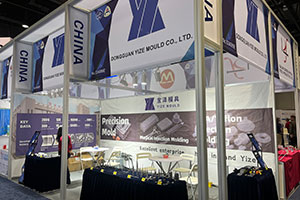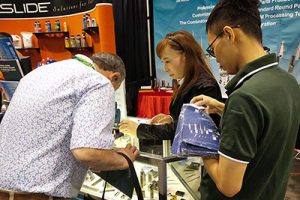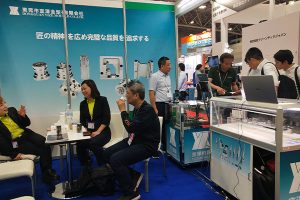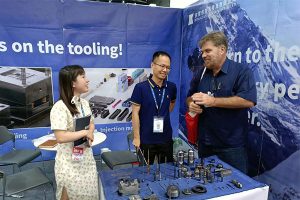Comprehensive Analysis of Methods and Standards for Quality Inspection of Tungsten Carbide Dies
In the context of the vigorous development of modern manufacturing, tungsten carbide dies serve as crucial tools. The quality of these dies directly determines the accuracy, performance, and lifespan of […]
In the context of the vigorous development of modern manufacturing, tungsten carbide dies serve as crucial tools. The quality of these dies directly determines the accuracy, performance, and lifespan of products. Accurate and reliable quality inspection is thus an essential link in ensuring the quality of tungsten carbide dies. This article will start by examining the characteristics of tungsten carbide dies and the objectives of quality inspection, and then provide a detailed introduction to the methods and standards for quality inspection of tungsten carbide dies, aiming to offer practical references for relevant enterprises and inspection personnel.
I. Characteristics of Tungsten Carbide Dies: Advantages and Potential Defects Coexist
Tungsten carbide dies possess a range of excellent properties, including high hardness, high wear resistance, high strength, high toughness, high heat resistance, and good corrosion resistance. These characteristics make them widely applicable in numerous fields such as metal processing and plastic molding. However, during the manufacturing and use processes, tungsten carbide dies may be affected by various factors, leading to potential defects like cracks, pores, inclusions, and uneven hardness. These defects can significantly impair the performance of the dies and substantially shorten their service life. Therefore, quality inspection of tungsten carbide dies is of utmost urgency.
Onze fabriek business: carbide onderdelen, schimmel onderdelen, medische spuitgietmatrijzen, precisie spuitgietmatrijzen, teflon PFA spuitgieten, PFA buismontage. e-mail: [email protected],whatsapp:+8613302615729.
II. Objectives of Quality Inspection for Tungsten Carbide Dies: Multi-dimensional Safeguarding of Die Quality
The primary goal of quality inspection for tungsten carbide dies is to ensure that the die quality meets both design and usage requirements, thereby enhancing the reliability and service life of the dies. The specific objectives are as follows:
- Identifying and Eliminating Manufacturing Defects: Detect and remove various defects that may occur during the manufacturing process of the dies, ensuring the integrity and reliability of the dies.
- Evaluating Performance and Service Life: Assess the performance and service life of the dies, providing a scientific basis for their rational use and maintenance.
- Monitoring Quality Changes: Continuously monitor changes in die quality, enabling the timely detection and handling of potential quality issues.
- Improving Manufacturing Levels: Enhance the manufacturing level of dies and the quality of products, thereby strengthening the market competitiveness of enterprises.
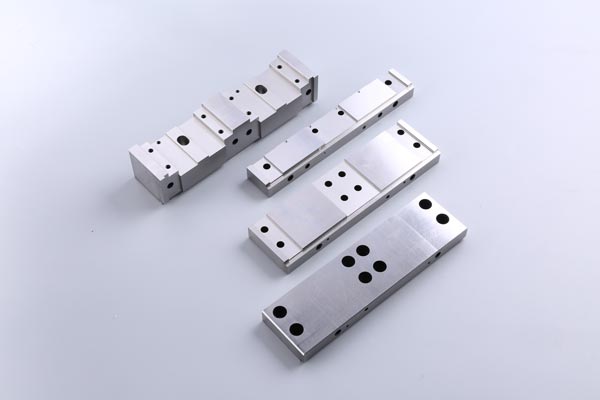
III. Methods for Quality Inspection of Tungsten Carbide Dies: Diverse Approaches for Precise Quality Control
(A) Visual Inspection: Simple and Direct but with Limitations
Visual inspection is the most basic and direct method for quality inspection of tungsten carbide dies. By using the naked eye or a magnifying glass to observe the surface condition of the dies, surface defects such as cracks, pores, and inclusions can be detected. This method is simple and easy to perform. However, it is significantly influenced by human factors and technical proficiency, and can only detect surface defects of the dies.
(B) Hardness Inspection: Key to Assessing Wear Resistance and Service Life
Hardness is an important performance indicator of tungsten carbide dies. Commonly used hardness inspection methods include Rockwell hardness testers, Vickers hardness testers, and Brinell hardness testers. By measuring the hardness value of the dies, their wear resistance and service life can be evaluated. Hardness inspection is straightforward in operation and provides intuitive results. Nevertheless, the testing conditions and operational techniques can have a substantial impact on the inspection results.
(C) Magnetic Particle Inspection: Highly Sensitive for Detecting Surface and Near-Surface Defects
Magnetic particle inspection utilizes the magnetism of tungsten carbide and changes in the magnetic field to detect defects. First, magnetic particles are applied to the surface of the die. After energization, the magnetic particles will accumulate at the defect sites, forming magnetic charges. By observing the shape and size of the magnetic charges, the quality of the die can be judged. This method can detect surface and near-surface defects of the dies, offering high sensitivity and reliability. However, it has certain requirements for operational techniques and environmental conditions.
(D) Ultrasonic Inspection: High-Precision and Non-Contact Inspection for Internal Defects
Ultrasonic inspection employs phenomena such as reflection, transmission, and scattering of ultrasonic waves during their propagation in materials to detect defects. By emitting ultrasonic waves into the interior of the die and receiving the reflected signals, it is possible to determine whether there are defects inside the die, as well as the location and size of the defects. Ultrasonic inspection boasts advantages such as high precision, high sensitivity, and non-contact inspection. However, it requires specialized equipment and technical support.
(E) Chemical Composition Analysis: Important Means for Evaluating Performance and Stability
Chemical composition analysis is a crucial method for evaluating the quality of tungsten carbide dies. By conducting chemical composition analysis on the die materials, the content and proportion of various elements in the dies can be determined, thereby assessing their performance and stability. Commonly used chemical composition analysis methods include spectral analysis and energy spectrum analysis.
IV. Standards for Quality Inspection of Tungsten Carbide Dies: Standardizing Inspection to Ensure Accuracy and Reliability
To guarantee the accuracy and reliability of quality inspection for tungsten carbide dies, a series of inspection standards must be followed:
(A) GB/T 10417 – 2008
This standard specifies the technical conditions, mechanical property testing methods, and testing requirements for indicators such as hardness and impact toughness of cemented carbide steel-bonded hard alloys.
(B) GB/T 10419 – 2002
This standard defines the testing methods, equipment, and testing conditions for the impact toughness of cemented carbide steel-bonded hard alloys.
(C) GB/T 10420 – 2002
This standard stipulates the testing methods, equipment, and testing conditions for the Rockwell hardness (C and A) of cemented carbide steel-bonded hard alloys.
(D) Other Relevant Standards
In addition to the above standards, there are numerous national standards, industry standards, and enterprise standards related to the quality inspection of tungsten carbide dies. These standards cover aspects such as dimensional accuracy, surface quality, and heat treatment performance of the dies.
V. Conclusion: Inspection Facilitates Quality Improvement and Development of Dies
Quality inspection of tungsten carbide dies is a vital measure for ensuring die quality, enhancing product performance, and extending die service life. By appropriately selecting inspection methods and strictly adhering to inspection standards, the quality status of tungsten carbide dies can be accurately evaluated, providing a solid basis for the rational use and maintenance of the dies. With the continuous development of the manufacturing industry and technological progress, the methods and standards for quality inspection of tungsten carbide dies will also be continuously improved and updated.
Verwante berichten
- Analysis of the Impact of Lubricant Selection on the Service Life of Tungsten Carbide Dies
- Strategies for Ensuring Dimensional Accuracy of Tungsten Carbide Dies
- The Impact of Cutting Force on the Service Life of Tungsten Carbide Dies
- The Impact of Processing Materials on the Selection of Tungsten Carbide Dies



